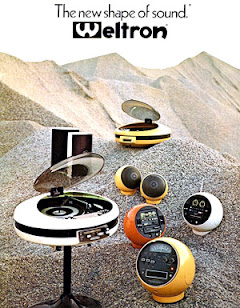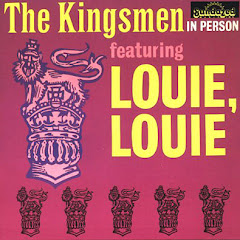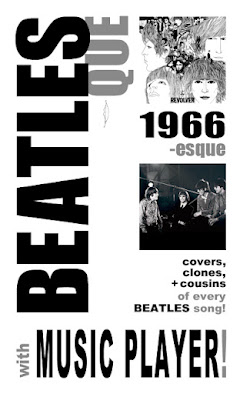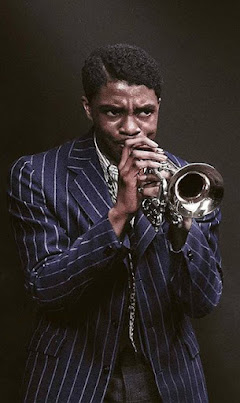SPAGHETTI WESTERNS brand much of your favorite music. Here are three music players to prove it.
Straddle your saddle and ride some of the coolest music ever made!
THE DOORS • BEACH BOYS • BOOKER T
LEE PERRY • WAR • BLACK SABBATH
THE METERS • HEART • BLONDIE • ABBA
THE CLASH • ADAM ANT • BAUHAUS
RED HOT CHILI PEPPERS • THE SMITHS
BUTTHOLE SURFERS • CAMEO • TOM WAITS
PIXIES • BEASTIE BOYS • SOUNDGARDEN
PRIMUS • DEPECHE MODE • METALLICA • U2
PORTISHEAD • LOS FABULOSOS CADILLACS
MUSE • QUEENS OF THE STONE AGE
CALEXICO • GOLDFRAPP • HOOVERPHONIC
GORILLAZ • GNARLS BARKLEY • KILL BILL
WHITE STRIPES • LOS LOBOS
ANNA CALVI • ADRIAN YOUNGE • LA LUZ
DAVID BOWIE • LA FEMME • RAMIN DJAWADI
GUADALUPE PLATA • THE LIMANANAS!
All of them and many more from every music style have paid loving tribute to Ennio Morricone's scores for these radical Western films.
In the mid-60's, a minor TV star named Clint Eastwood took the odd offer of making some Western films in Italy. The trilogy -A FISTFUL OF DOLLARS (1964), FOR A FEW DOLLARS MORE (1965), and the epic THE GOOD, THE BAD, AND THE UGLY (1966)- made him an international star, revolutionized film technique, and unleashed scores of clones.
(The films got called "Spaghetti Westerns" because Americans thought it was novel to have their history retold by Italy. Since we don't call US films "Hamburger Movies", I'm going to skip that tired pejorative and call them what they are, Italian Westerns.)
Director Sergio Leone's use of hand camera, natural light, fast edits, severe close-ups, and panoramic vistas virtually invented modern cinema and videos. But just as important was that thunderous, edgy, bizarre, and brilliant music.
If you know, you're raring to go. And if you don't, it's time for a mind blow...
Here are three music players:
1 • The roots of the sound
2 • The Italian Western soundtracks
3 • The galaxy of great songs that homage the sound
Also:
4 • Influenced by Italian Westerns:
Film, TV, Animation, Books, Comics, Video Games
1
The Roots Of
The ITALIAN WESTERN Sound!
by Tym Stevens
Many different strains of music all led to the classic Italian Western sound.
• Folk activist WOODY GUTHRIE was an unlikely catalyst. His song "Pastures Of Plenty" would be the trigger for the Spaghetti Western sound in a later remake arranged by Ennio Morricone. (More below.)
• Western film soundtracks are the obvious main template: Film scores such as Dmitri Tiomkin's HIGH NOON (1952) and Elmer Bernstein's THE MAGNIFICENT SEVEN (1960); and TV themes such as "Rawhide", covered later by The Blues Brothers and Dead Kennedys.
• Country & Western was actually two different musics; Country music in the USA was based out of imigrant folk ballads and dances, while Western was influenced by traditional Cowboy songs and later incorporated Swing Jazz horns. More importantly for our topic, the guitar took on a hard clanging sound played with deep bass notes in a new genre called HonkyTonk in the mid-50's. This hard clang galloped hits by Johnny Horton, Johnny Cash, and guitarist Bill Justis.
• Rock'n'Roll had strong Country roots, and the hard clang of Honky Tonk then inspired guitar virtuosos like Duane Eddy and Link Wray. Eddy's sound of strong resonant bass chords earned him the name "the Twang Bar King". In their wake came all-guitar bands with instrumental hits like The Ventures and Davie Allan And The Arrows.
• English guitar bands, many produced by sonic wizard Joe Meek, followed in pursuit, like The Shadows with hugely-influential hit "Apache", and The Outlaws which included young Ritchie Blackmore (Deep Purple, Rainbow)). A rival was The John Barry Seven, whose leader went on to use the tough guitar sound with dynamic strings as legendary composer for the James Bond films.
• Surf music caught that sonic wave and rode it to new shores with Dick Dale and The Sentinels. Note the original version of "Cecilia Ann" by The Surftones, later immortalized by Pixies. And also Jack Nitzche's "The Lonely Surfer", an arranger for Phil Spector whose use of epic strings, hard clang, and triumphant horns foretells Morricone.
• Classical clearly paved the way with the use of symphonic scores for Western films. But, in its loose and instinctive structure, the spirit of freeform Jazz also haunts the trails. A good parallel course is Miles Davis and Gil Evan's atmospheric hybrid of both forms on the "Sketches Of Spain" album.
• Spanish flamenco guitar particularly is a key ingredient of many Italian Western scores. And while Opera ushered the theatrical vocals, another similar parallel for mood and majesty is the Portuguese blues of Fado music, ruled by Amalia Rodrigues.
• Mexican music, such as Mariachi guitar ballads and triumphant horn anthems, which are echoed in hits by Herb Alpert like "The Lonely Bull".
2
The Soundtracks of
The ITALIAN WESTERN!
by Tym Stevens
Why is this music so impossibly cool?
Of Italian Western Cinema
Martin Scorsese makes the case that Westerns changed to reflect their times. In the 30's, America saw itself as morally good, and the Westerns coded that into simple good-versus-evil plots which starred White Hat paragons like John Wayne against swarthy Black Hats. By THE SEARCHERS (1957), America was undergoing much inner struggle as to the morality of its character, and John Wayne plays an ambivalent and strident crusader who's squarely on the wrong side.
Because their post-War affluence in the 50's seemed like the fruition of Manifest Destiny, Americans loved film and television Westerns that reaffirmed this in moral parables. But the Civil Rights movement and rising youth rebellion called this status quo into question. Now issues like Native American rights and an array of past injustices began to surface.
By the 60's, that reassessment of moral character and social injustice became a shared world struggle. The Italian Westerns are in a sense anti-Westerns. They use the conventions of Westerns, but they upend them in every way.
The contrived Hollywood theatricality and artifice disappeared. No more studio sets, slick grooming, and jingoistic robots. Italian Westerns, made in the wake of naturalistic films from Neorealist pioneers to Japanese auteurs to France's New Wave youngbloods, were shot verite-style, in the moment and location, with lens flares, gritty edges, and unadorned. The heroes were anti-heroes, with no stance but survival. In musical terms, if John Wayne was akin to Frank Sinatra, then Clint Eastwood was closer in spirit to Johnny Rotten.
Italian Westerns absorbed the style and substance of avant-garde film and succeeded with mainstream audiences. The raw style and maverick outlook helped trailblaze the counterculture's New Hollywood films of the early 70's.
Why all this yadda-yadda? Because that radical revamp extended to the music.
Western scores had always been triumphant anthems and romantic swirls that sloshed through every scene. Stirring at best, syrupy at worst. It was time for something else. Enter Ennio Morricone.
Woody Guthrie's "Pastures Of Plenty" was covered by Italian crooner PETER TEVIS in 1962, with a dramatic arrangement by rising composer Morricone. Film director Sergio Leone was so taken by the style that he insisted it be used for his Western, A FISTFUL OF DOLLARS (1964). It became the signature sound of all Italian Westerns going forward.
A hard clanging guitar. Brutal chanting chorals. The rubbery twang of a Jaw Harp. Stampede rhythms. An eerie whistling. An ethereal wordless female aria. A corroded harmonica. Midnight Flamenco. The declarative horns of Mexican angels.
Gone were the amorphous symphonies tumbling, replaced now by silences, streamlined harshness, and textural sounds. In the moment, in the character, with emotional flares, gritty edge, and unadulterated. An anti-symphony for anti-heroes, something both brutal and glorious.
Some of the coolest music ever made.
"La Dolce Vita". Rome in the mid-60's was as much a pop renaissance scene as London, Paris, and San Francisco. The Cinecitta film scores by a pantheon of composer gods are holy scripts of hyper-hip.
The composers swung every style that came, from Rock to Bossa to Electronic to Lounge to Funk. Nowadays their soundtracks are coveted by rockers, cratediggers, and samplers of all countries and styles.
The Prime Mover. The Italian Westerns launched Ennio Morricone's career and fame, but he was too vast and prolific to be hemmed in. He has made over 400 scores in every musical style and movie genre, most of them superior to the films they were for. Almost certainly the most diverse and formidable composer in film history.
Everyone in Rome followed his lead.
The clanging guitar and signature whistling was by his friend, Alessandro Alessandroni. 'Sandro' also led the Cantori Moderni (Modern Singers) who did all the chorals and chanting. Besides playing, whistling, and singing on everyone's scores, he wrote great film soundtracks of his own.
Morricone's right-hand man, Bruno Nicolai arranged all of Ennio's compositions for recording, and wrote many excellent scores in his own right.
Edda Dell'Orso is the ethereal operatic voice that lifts so many of these themes. Morricone used her voice like an instrument, avoiding words for soundscapes. She enlivens countless Italian soundtracks with angel arias, jazzy scat, sensual cooing, edgy moaning, and lounge bliss.
The hepcat, very jazzy and funky. Piero Umiliani was as hip as anything going, whether Funk or Electronic or Psychedelic. He did the original "Mah Na Mah Na" that the Muppets covered.
The Argentinian, Luis Bacalov brought in the Bossa Nova and Samba Jazz. Could also Rock like a brofo!
Umiliani's contender in the Funk and Jazz stakes was Piero Piccioni. Uber-cool, sexy swang, makes you wanna shake that thang!
Armando Travaioli was another abundantly talented and well-rounded composer who hit it note perfect in every genre.
Thankfully breaking up the boys club, Nora Orlandi was a choral leader (who discovered Alessandroni) and also wrote terrific scores.
3
The Sound
Of ITALIAN WESTERNS
in Rock, Pop, Soul, Reggae, Punk, Hiphop,
Metal, Electro, TripHop, Indie, Psychobilly, Soundtracks, and Games!
by Tym Stevens
Hear the unlimited Playlist here.)
The sound of Italian Westerns raised generations. Whether at the movies, on TV, or video, that haunting and powerful sound was all-pervasive and seductive to musicians of all angles. It haunts many of our favorite songs, even when we don't realize it.
RIDERS
From 1966 on, bands were in love with the soundtracks of Morricone and his gang. Here's a walk through time that sheds light on many of your favorite songs...
• Love lived in L.A. when the Spaghetti Westerns hit critical mass in 1966. Their Spanish-inflected and cinematic "Alone Again Or" bears striking similarity to the Morricone sound. Later, The Damned covered it with a video homaging the Leone films. Scout out also The Doors' "Spanish Caravan" and Mountain's "Theme From An Imaginary Western".
• That hard horse-galloping power, akin to "Riders In The Sky", is the drive underneath Black Sabbath's "Children Of The Grave", Heart's "Barracuda", and Melissa Auf Der Maur's "Skin Receiver".
• Bollywood gets in the act with a number from the classic SHOLAY (1975), the biggest film in Indian history.
• Blondie's "Atomic" is a fine homage; this is why the horse is riding around NYC in the video.
• Then there's The Clash connection. 'The Last Gang In Town' has a lot of that Morricone mood in "Straight To Hell". Mick Jones' solo band Big Audio Dynamite throw in samples from "The Good, The Bad, & The Ugly" in their "Medicine Show". Paul Simonon's Havana 3AM really rides the range with "Hey, Amigo". Joe Strummer starred in the modern Leone homage film STRAIGHT TO HELL (1987), while fronting The Latino Rockabilly War with their b-side "Don't Tango With Django".
• Punk grabbed the reins in such songs as Dead Kennedys' "Holiday In Cambodia" (listen to those guitar soars), and the opening of The Vandals' "Urban Struggle".
• In the PostPunk years, that hard clanging anthemic guitar rode roughshod through Magazine's "Shot From Both Sides", Bauhaus' "In The Flat Field", Crime And The City Solution's "Trouble Come This Morning", Nick Cave And THe Bad Seeds' "The Weeping Song", The Plugz' "Reel Ten", and Tom Waits' "Yesterday Is Here".
• Atmospheric and cinematic bands like Calexico, Gravenhurst, Friends Of Dean Martinez, and Scenic continued that tradition. And Muse went for glory with "Knights Of Cydonia" and its epic Leone-esque video.
• New Wave guitarists loaded their arsenal with that sound. Particular stand-outs are The Go-Go's' "This Town", Marco Pirroni's ringing guitar and the blasting horns of Adam Ant's "Desperate But Not Serious", and Wall Of Voodoo's "Call Of The Wild".
• Dance bands knew a good riff and horn chart when they heard it. Check out the galloping synth and fanfare that opens ABBA's "Gimme! Gimme! Gimme!" again. France's Casino Music extends that quest with "Faites Le Proton", foretelling the Jaw Harp and eerie vibe of Air's "Wonder Milky Bitch". And after their song "Clint Eastwood", Gorillaz really ride rawhide with "O Green World".
• HipHop had lots of lyrical shout-outs to Cowboy films from the beginning. Avant-Funkers Material enlist DJ DsT in their street take on "For A Few Dollars More"; Kool Moe Dee chronicles the "Wild Wild West" with the classic "Good/Bad/Ugly" riff; and the trail is picked up lyrically by The Beastie Boys' "High Plains Drifter"; and lately, Columbian rapper Rocca, and The Cycle Of Tyrants.
• Surf helped unfurl the sound in the first place, and that came back around in Pixies' Morricone-esque cover of The Surftones' "Cecilia Ann", and retro-wavers like Shadowy Men From A Shadowy Planet and The Aqua Velvets.
• Electronic Music was an early tool of the Italian film composers, so it should be no surprise that acolyte Georgio Moroder rides the moog through "Tears". Electronica continued the chase with The Orb's "Little Fluffy Clouds", and The Prodigy's "The Big Gundown".
• Video Games flint the flame with themes in "Sonic THe Hedgehog 2" (Masato Nakamura), and "Wild Arms" (Michiko Naruke). Italian Westerns got their own game with "Outlaws", and this continues with current hits like "Red Dead Revolver" and "Red Dead Redemption". Plus, their influence is clear in shooter games like "Fallout: Las Vegas" and "Bulletstorm".
• TripHop, with its cinematic moodiness, of course brushfired the plains with songs like Portishead's "Cowboys", Hooverphonic's "Jackie Cane" and its video, and Alison Goldfrapp channeling Edda Dell-Orso's arias and Alessandroni's whistle through "Lovely Head".
• Gnarls Barkley used a sample of the Italian Western theme for "Last Man Standing" (by Gianfranco Reverberi ) as the basis for their giant hit, "Crazy". Now Danger Mouse is doing an homage album to Italian Westerns called "Rome" with musician/ producer Daniele Luppi and the reunited studio players from the original soundtrack sessions!
• Metal thundered into town with Metallica's take on "The Ecstasy Of Gold". Mike Patton (Faith No More, Fantomas) was so enamored of Morricone that he issued CD compilations on his own record label, and sang covers with the orchestral Mondo Cane.
• Morrissey enlisted Ennio Morricone himself to arrange the orchestra for "Dear God Please Help Me".
• The Italian Composers put the thrill into KILL BILL. 1 and 2 (2003, 2004). The yin-yang films, an Eastern and a Western respectively, continued the cultural-swap tradition: SEVEN SAMURAI (1953) had inspired THE MAGNIFICENT SEVEN (1960), and YOJIMBO (1961) had inspired A FISTFUL OF DOLLARS (1964). (This rocksex continues across time to SUKIYAKI WESTERN DJANGO (Japan, 2007) and THE GOOD, THE BAD, THE WEIRD (S. Korea, 2008).) Quentin Tarantino and RZA deliberately picked songs in the Morricone tradition by fellow composers like Bacalov, Trovaioli, Ortolani, and Orlandi, and artists like Zamfir, Tomoyasu Hotei, and Nancy Sinatra.
Influenced by
ITALIAN WESTERNS
F I L M
• KILL! (Japan, 1968)
• HAVE SWORD, WILL TRAVEL (Hong Kong, 1969)
• THE WANDERING SWORDSMAN (Hong Kong, 1969)
• EL TOPO (Russia, 1970)
• WHITE SUN OF THE DESERT (Spain, 1970)
• RED SUN (France/Italy/Spain, 1971)
• THE LEGEND OF FRENCHIE KING (Fr/Sp/It/Br, 1971)
• McCABE AND MRS. MILLER (US, 1971)
• BUCK AND THE PREACHER (US, 1972)
• HIGH PLAINS DRIFTER (US, 1973)
• WESTWORLD (US, 1973)
• MY NAME IS SHANGHAI JOE (Italy, 1973)
• ZARDOZ (Irish/US/Br, 1974)
• THOMASINE AND BUSHROD (US, 1974)
• TAKE A HARD RIDE (US, 1975)
• SHOLAY (India, 1975)
• GANGA KI SAUGANDH (India, 1978)
• HEAVEN'S GATE (US, 1980)
• ESCAPE FROM NEW YORK (US, 1981)
• MAD MAX II: The Road Warrior (Australia, 1981)
• OUTLAND (US, 1981)
• MAD MAX: Beyond Thunderdome (Aus/US, 1985)
• PALE RIDER (US, 1985)
• TAMPOPO (Japan, 1985)
• STRAIGHT TO HELL (Br, 1987)
• YOUNG GUNS (US, 1988)
• BACK TO THE FUTURE III (US, 1990)
• EL MARIACHI (US, 1992)
• POSSE (US, 1993)
• BANDIT QUEEN (India, 1994)
• BAD GIRLS (US, 1994)
• DESPERADO (US, 1995)
• SIX STRING SAMURAI (US, 1998)
• THE QUICK AND THE DEAD (US, 1995)
• DEAD MAN (US, 1995)
• ONCE UPON A TIME IN MEXICO (US, 2003)
• GUN CRAZY: A WOMAN FROM NOWHERE (Japan, 2002)
• GANG OF ROSES (US, 2003)
• KILL BILL, I and II (US, 2003/2004)
• SERENITY (US, 2005)
• BANDIDAS (Fr/Mex/US, 2005)
• EXILED (S. Korea, 2006)
• SUKIYAKI WESTERN DJANGO (Japan, 2007)
• THE GOOD, THE BAD, THE WEIRD (S. Korea, 2008)
• THE BOOK OF ELI (US, 2010)
• RANGO (US, 2011)
• COWBOYS AND ALIENS (US, 2011)
• FLYING SWORDS OF DRAGON GATE (Hong Kong, 2011)
• DJANGO UNCHAINED (US, 2012)
• MAD MAX: FURY ROAD (Australia, 2015)
• LOGAN (US, 2017)
• THE DARK TOWER (US, 2017)
• STAR WARS: SOLO (US, 2018)
T V
• KUNG FU (US, 1972)
• KAIKETSU ZUBAT (Japan, 1977)
• CHILDREN OF THE DUST mini-series (US, 1995)
• FIREFLY (US, 2001)
• DEADWOOD (US, 2004)
• BREAKING BAD (US, 2008)
• BETTER CALL SAUL (US, 2015)
• WESTWORLD (US, 2016)
• WYNONNA EARP (US, 2016)
• THE MANDALORIAN (US, 2019)
• DJANGO (Br, 202_)
• THAT DIRTY BLACK BAG (US, 202_)
A N I M A T I O N
• FIST OF THE NORTH STAR (Japan, 1984)
• VAMPIRE HUNTER D (Japan, 1985)
• COWBOY BEBOP (Japan, 1997)
• SAMURAI JACK (US, 2001)
• GUNxSWORD (Japan, 2005)
• EL TIGRE: The Adventures of Manny Rivera (US, 2007)
B O O K S
• The DARK TOWER series by Stephen King (US, 1982+)
C O M I C S
• BLUEBERRY, post-1966 (France, 1963)
• JONAH HEX (US, 1972)
• LUCKY LUKE: The Bounty Hunter (France, 1972)
• EL MESTIZO (Br, 1977)
• SABRE (US, 1978)
• PREACHER (US, 1995)
• BLAZE OF GLROY: The Last Ride Of The Western Heroes (US, 2000)
• JOJO'S BIZARRE ADVENTURE: Steel Ball Run (Japan, 2004)
• THE MAN WITH NO NAME (US, 2008)
• PRETTY DEADLY (US, 2013)
• SONS OF EL TOPO (US, 2016)
• THE LAST SEIGE (US, 2019)
V I D E O
G A M E S
• OUTLAWS (US, 1997)
• GUNFIGHTER: The Legend of Jesse James (US, 2001)
• BOKTAI (Japan, 2003)
• RED DEAD REVOLVER (US, 2004)
• RED DEAD REDEMPTION (US, 2010)
• THE SHOWDOWN EFFECT (US, 2013)
• SECRET PONCHOS (US, 2014)
(CATWOMAN #50; Will Pfeiffer (w), Pete Woods (a), 2006.)
© Tym Stevens
See Also:
• Ride the range!:
Morricone Rocks!
• "Pastures Of Plenty" - Woody Guthrie > Ennio Morricone > A FISTFUL OF DOLLARS
• Cool Italian Western Rock Bands!
• ROCK Sex quickie: 'Spaghetti Western' > Gnarls Barkley
• The Pedigree of PETER GUNN
, with Music Player
• JOHN BARRY: The Influence Of The JAMES BOND Sound On Pop Music, with 2 Music Players
• Shock Waves: How SURF MUSIC Saved Rock'n'Roll!, with 2 Music Players
• 2001: A SPACE ODYSSEY - Its Transcendent Influence on all Pop Culture!, with Music Player
• TWIN PEAKS: Its Influence on 30 Years of Film, TV, and Music!, with 5 Music Players
• How STAR WARS Is Changing Everything!
• The Real History of ROCK AND SOUL!: The Music Player Checklist





































































































































